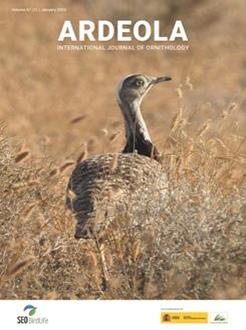There are two main methods to extract pigments from avian eggshells. There are those using strong acids (e.g. sulphuric, hydrochloric or formic), that allow for a quantification of pigment concentrations but with which samples are destroyed. Alternatively, there are methods employing weaker acids (e.g. acetic), with which samples are not destroyed, although pigment concentrations may not be quantified and only their presence is detected. In some cases, there may be a need to quantify pigments in samples in which the pigments have already been detected. Here, we assess whether the quantity of pigments extracted from eggshells using a strong acid is affected by previous treatment of eggshells with a weak acid. For this, we used eggshells of Kentish Plovers Charadrius alexandrinus and domestic Japanese Quails Coturnix japonica, and aliquots of individual eggshells treated either with both acids (first applying a weak acid and then a strong acid) or only with the strong acid. Quantities of extracted protoporphyrin and biliverdin (the main eggshell pigments) were lower when using a strong acid after application of a weak acid. However, there were significant positive correlations between the quantities of pigments extracted using the two methods, suggesting that eggshell samples used to determine pigment presence may still be usable to quantify pigment concentrations using a strong acid.—Gómez, J., Ramo, C., Canales, J.A., García, I.M., Castro, M., Pérez-Hurtado, A. & Amat, J.A. (2020). A comparative assessment of pigment extraction from avian eggshells using two analytical protocols. Ardeola, 67: 85-92.
Tradicionalmente se han empleado dos métodos para extraer pigmentos de cascarones de huevos de aves. Están aquellos que usan ácidos fuertes (p. ej., sulfúrico, clorhídrico o fórmico), que permiten una cuantificación de las concentraciones de pigmentos, pero con los que las muestras son destruidas. Alternativamente, hay métodos que emplean ácidos débiles (p. ej., acético) que no destruyen las muestras, pero que no permiten cuantificar concentraciones de pigmentos y solo su presencia es detectada. En algunos casos, puede ser de interés cuantificar los pigmentos en muestras en las que ya se han detectado los pigmentos. En este estudio hemos valorado si las cantidades de pigmentos extraídas mediante la aplicación de un ácido fuerte se ven afectadas si previamente se usó un ácido débil en las mismas muestras. Para ello se utilizaron cascarones de huevos de chorlitejo patinegro Charadrius alexandrinus y de codorniz japonesa doméstica Coturnix japonica. Se analizaron alícuotas de cascarones tratadas con ambos ácidos (primero aplicando el débil y después el fuerte), o sólo el ácido fuerte. Las cantidades extraídas de biliverdina y protoporfirina (los principales pigmentos de los cascarones) fueron menores cuando se usó el ácido fuerte tras la aplicación del débil que cuando únicamente se aplicó el ácido fuerte. Sin embargo, se detectaron correlaciones positivas elevadas entre las cantidades de pigmentos extraídas con ambos procedimientos, lo que sugiere que las muestras utilizadas para detectar la presencia de pigmentos todavía pueden ser útiles para la cuantificación de pigmentos utilizando un ácido fuerte. —Gómez, J., Ramo, C., Canales, J.A., García, I.M., Castro, M., Pérez-Hurtado, A. y Amat, J.A. (2020). Comparación de dos protocolos para la extracción de pigmentos de cascarones de huevos de aves. Ardeola, 67: 85-92.






